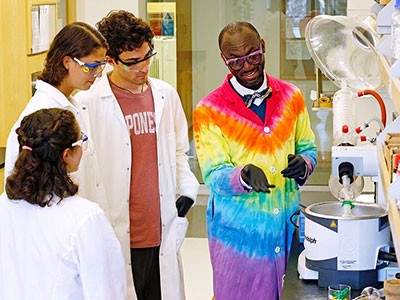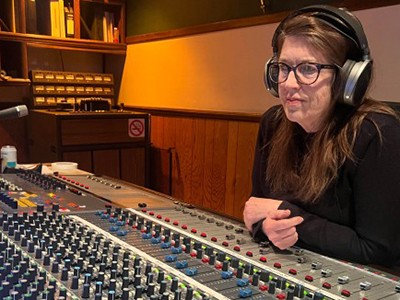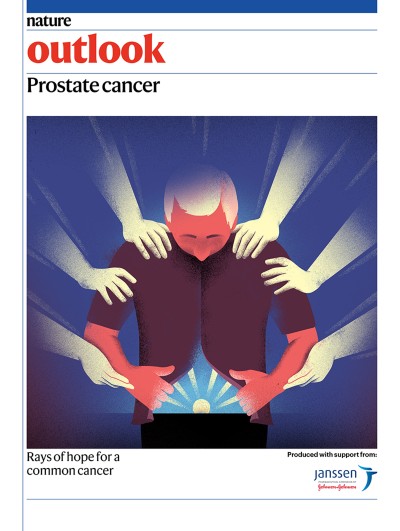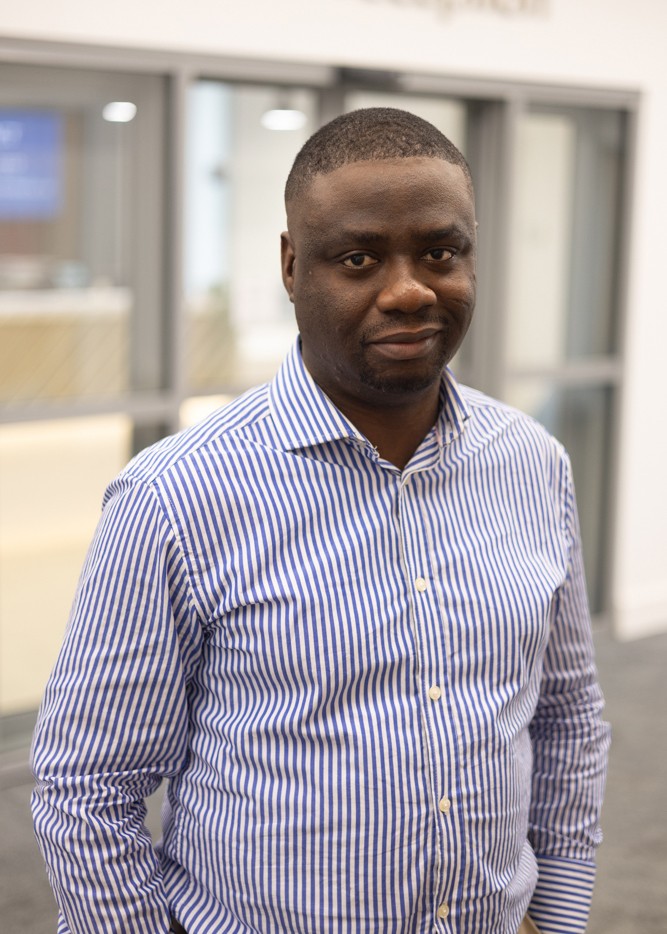[ad_1]
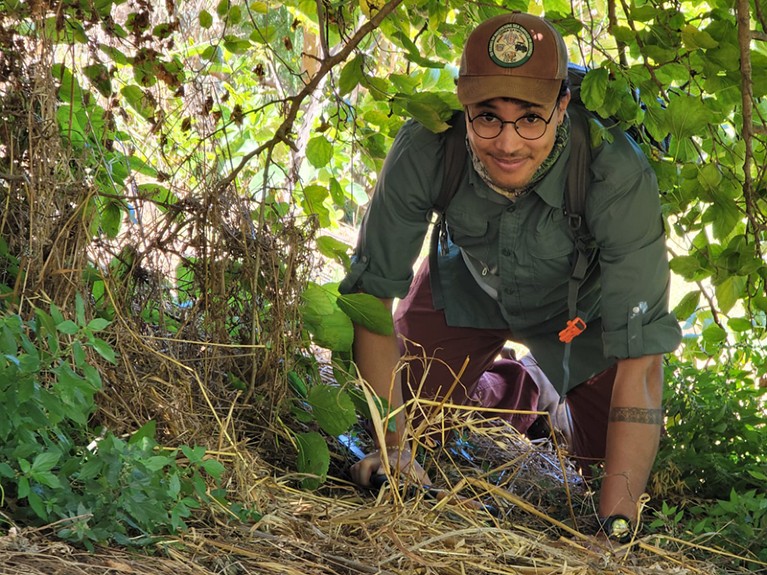
El ecologista carnívoro Tyus Williams se sienta a la altura de los ojos para instalar una cámara de vida silvestre en Bayview Park, San Francisco, California.Crédito: Dr. Christopher J. Schell
Tyus Williams dice que creció como un niño nerd, neurodiverso y amante de la ciencia que estaba algo inseguro de su lugar en el mundo. “Cuando eres un niño negro joven y curioso con TDAH y trastorno del espectro autista, sientes que naciste en un mundo que no fue hecho para ti”, dice. Hoy en día, es un ecologista carnívoro emergente con fanáticos que van desde lectores de su primer libro para niños hasta guerreros de la justicia social en línea y colegas que admiran su tipo de justicia.
“Cuando tenía seis años supe lo que quería ser”, dice Williams. Esto significa trabajar con animales, especialmente la vida silvestre. Pero después de aceptar un trabajo docente en un hospital de animales en Alpharetta, Georgia, donde creció, Williams se dio cuenta de que no podía permitirse el lujo de sacrificar a las mascotas. En cambio, eligió el camino de la investigación.
Williams estudió ciencias de la vida silvestre en la Universidad de Georgia en Atenas. Sus primeras investigaciones incluyeron contribuciones al estudio de salamandras y jaguares de los Apalaches (tigre onka) En Belice, las tortugas marinas y las serpientes de cascabel orientales (Crotalus adamantius) en la costa de Georgia.
El químico bailarín de TikTok despierta alegría en los estudiantes
Como alguien que no siempre encaja, Williams tiene debilidad por los carnívoros, que pueden verse como amenazas o amenazas, especialmente en las áreas urbanas.
“Mi madre nunca me dejó comer serpientes, pero siempre me interesó comer carne”, dice. Ahora está trabajando en su tesis doctoral en la Universidad de California, Berkeley, donde divide su tiempo entre el grupo del ecologista urbano Chris Schell y el del ecologista de vida silvestre Justin Brashares. Williams estudia cómo la sociedad humana exacerba los efectos que los gatos domésticos que viven al aire libre (ahora considerados invasivos) tienen en otras especies. Los grupos de investigación estudian la ecología urbana, la justicia y la equidad.
“El ecologista en tu barrio amigo”
Schell conoció a Williams por primera vez en un evento para especialistas en mamíferos negros. Los dos se unieron por un interés compartido en encontrar conexiones entre la ecología y la sociología, en otras palabras, en cómo el comportamiento humano afecta lo que hacen los animales en su entorno.
“Tiene el verdadero amor por la ciencia que se puede ver en un niño de cinco años”, dice Scheel. Incluso en el mundo académico, propenso al agotamiento, Williams parece haberlo mantenido. Sin embargo, “no creo que Tyus haya perdido de vista que es uno de los pocos estudiantes negros en el departamento”, dice Scheel. “Tyus sufrió el síndrome del impostor de una manera increíblemente grande”.
A pesar de estas dificultades, Williams hace esfuerzos continuos para comunicarse a través de las redes sociales junto con sus estudios. Dirigió las redes sociales de Cougar Network, una organización de investigación estadounidense, y su libro para niños. Grandes felinos (Un día en la vida) Fue publicado en 2022..
Características profesionales del científico en activo.
El libro está dirigido a niños de seis a ocho años que quieran profundizar en detalles científicos, tal y como lo hacía Williams a esa edad. En Neon Squid Books, su editor, Sam Brady, dice que el público objetivo es un niño pequeño al que “le encantan los datos, aprender cosas, recopilarlas y contarlas a sus amigos y familiares”. Para el autor, “queríamos a alguien que realmente hubiera estado con estos animales en la naturaleza y los hubiera rastreado”, dice Brady.
En 2018, Williams lanzó #SciQFriday en X (anteriormente Twitter). A través de esto, pasó dos años organizando sesiones de preguntas y respuestas semanales con docenas de científicos de la vida, desde herpetólogos hasta virólogos y microbiólogos, antes de recurrir a plataformas más nuevas como TikTok.
También en las redes sociales, Williams, que se describe a sí mismo en TikTok como “el amigable ecologista de su vecindario”, ha ganado seguidores por sus publicaciones que abordan temas actuales desde una perspectiva científica y de justicia social. Caso en punto este Esto explica por qué la desaparición de animales domésticos en Springfield, Ohio, se debe a la depredación de los coyotes y no a que sean devorados por inmigrantes haitianos, como sugirió el presidente electo de Estados Unidos, Donald Trump, durante su campaña electoral. Williams a menudo inserta referencias en la esquina inferior de los videos de TikTok que graba en su departamento, con su póster favorito de Spider-Man de fondo.
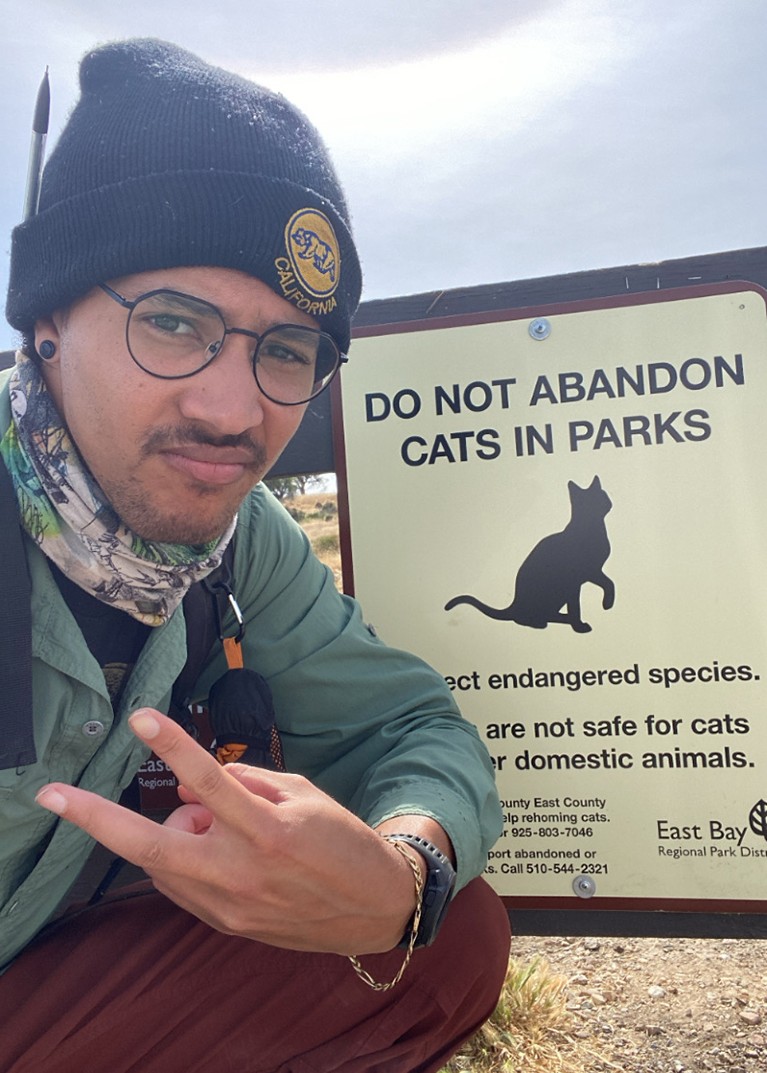
Williams junto a un cartel en la playa regional de Oyster Bay en San Leandro, California, advirtiendo a la gente que no abandone a los gatos domésticos en el parque. Crédito: Tyus D. williams
Como académico millennial, Williams a menudo difumina los límites entre la identidad personal y profesional. Su estilo conversador e informativo le ha valido más de 31.700 seguidores en TikTok, con más de 1,2 millones de me gusta. No tiene miedo de publicar un vídeo sobre la ciencia detrás del cabello texturizado, con seis citas, porque eso es lo que a él mismo le interesa. Williams describe su poesía “Es como si Medusa e Hydra se juntaran y este fuera su amado hijo”. Continúa explicando que el concepto de cabello “bueno” o “malo” es problemático y está impulsado por los ideales supremacistas blancos de cabello liso y liso, y la idea de que el cabello rizado o texturizado es inherentemente menos deseable.
“Los diferentes tipos de texturas que vemos, e incluso el cabello rizado en sus formas más extrañas, son un maravilloso ejemplo de los fenómenos vivos de la selección adaptativa bajo presiones selectivas”, explica, describiendo una investigación que postula que el cabello texturizado evolucionó como un sistema refrescante. mecanismo como los humanos. Evolucionó en África tropical. Los investigadores demostraron que cuanto más apretado esté el rizo, mejor se podrá disipar el calor. El vídeo dura casi cinco minutos, lo que en el mundo de TikTok significa una eternidad.
Pero compartir mucho en las redes sociales es el estilo de Williams. “Participar en un largo debate filosófico sobre la relación entre cosas que parecen no tener ninguna relación con algo que hacemos en el laboratorio”, dice Schell. “Este es el modelo de Tyus”.
Justicia social en el desierto
La investigación de Williams establece vínculos complejos entre el racismo y el colorismo (prejuicio contra personas de la misma raza pero con tonos de piel más oscuros). Incluye las implicaciones del prejuicio contra los animales oscuros y el significado espiritual de las raras versiones blancas de especies como el búfalo (bisonte bisonte), osos y alces (ciervo canadiense). Un estudio del que fue coautor el año pasado arrojó luz sobre cómo las sociedades humanas interactúan y protegen a los inusuales coyotes blancos o negros (perro ladrando), ardillas grises orientales (Ceaurus carolinensis) y venado de cola blanca y de cola negra (Odocoelius virginianus y Oh Himeonus), cuyo pelaje suele ser marrón o gris.1.
[ad_2]
Source Article Link


